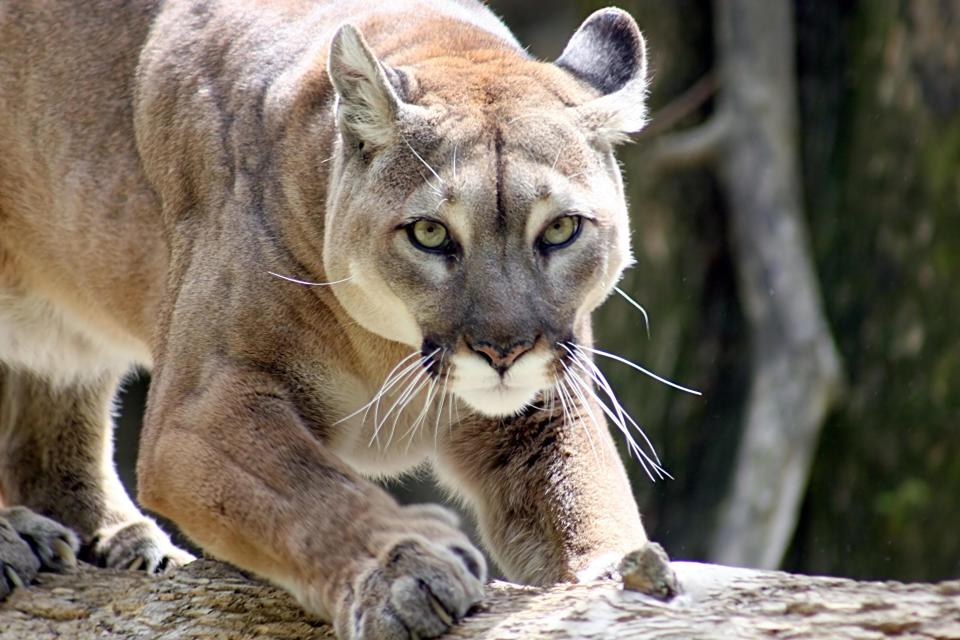Mountain lion sighting reported in East El Paso but not confirmed, city officials say
Residents shouldn't be alarmed after a reported sighting of a mountain lion roaming around an East El Paso neighborhood earlier this week, the city's zoo director said.
An animal protection officer met with a resident who had video showing a possible mountain lion spotted on Tuesday, July 25, in an alley behind Red Sails Drive near Edgemere Boulevard in the neighborhood of Pebble Hills Elementary School, city officials said Thursday.
Because the video quality was grainy, the animal protection officer could not definitely determine the feline was a mountain lion. The mountain lion sighting is considered "not substantiated at this time," a city official said.
Mountain lions — also known as pumas and cougars — are natives of the Chihuahuan Desert and sightings are not uncommon in El Paso.
In 2018, the El Paso Zoo was shut down during a fruitless five-hour search after a security guard reported seeing a mountain lion visiting the zoo.
Joe Montisano, zoo director, said "yes, there was a sighting inside the zoo, but it was never confirmed. The team looked, searched and could not find the animal or verify the sighting."
In 2017, a mountain lion was captured in the backyard of a home on Seattle Slew Drive in Montana Vista. A state veterinarian tranquilized the animal without any incident after officials with the Texas Parks and Wildlife Department and the El Paso Zoo responded to the home.
Why are mountain lions entering El Paso?
"This was all the mountain lion territory, so maybe a better question is what are we doing living in 'their' desert," Montisano said.
The mountain lion population has been in decline for years and what makes them wander beyond their normal desert habitat is the search for food and water, Montisano explained.
"Mountain lion populations in the wild have been on a steady decline for years. They are listed as a 'species of least concern' nationally but in Texas, as their habitat is reduced and the nature areas become more urbanized the numbers of animals in Texas wild declines," he said in an email.
"Mountain lions could be expanding their territory into human areas probably because of a lack of prey more than lack of water. As the heat intensifies it is very hard on the smaller animals like field mice, rabbits, rats, etc. as they cannot travel to water as easily as a cougar can. These smaller critters will move into human areas and therefore the mountain lions will follow in the search for food," Montisano said.

Montisano said it is always concerning to conservationists when wild animals are close to interacting with humans.
"It is important that we humans do not try to interact with wild animals. They may look like a bigger version of your house cat but they are always wild animals. Never feed wild animals or leave food out for them, human food is not part of their natural diet and is not good for them," he said, adding that that is why there is some deformity in the wings of ducks and geese fed bread.
Feeding wild animals can also spread disease and cause wildlife to lose the ability to find their own food.
What to do if you encounter a mountain lion
Mountain lions are apex predators that can sprint up to 60 miles per hour and take down small deer and even a moose, Montisano said.
Nevertheless, he points out that only 16 recorded deaths from cougar attacks have occurred in the last 50 years.
Don't travel alone. When using trails for hiking, running, biking or walking, make more noise, alerting the mountain lion to your presence and increasing the chance they will avoid you.
Watch pets, small children and your dogs. Keep dogs and other pets on a leash and a close eye on children.
Avoid dusk and dawn. Mountain lions are most active during dawn, dusk and after dark.
Do not approach. Give animals plenty of space to be able to turn and run away; they are more afraid of you than you are of them.
Make yourself big. Stand up tall, wave your arms over your head, open up your jacket if you have one.
Don't run. Running can trigger their instinct to chase and attack. Don't turn your back if possible, back away slowly while facing them. Pick up and hold small children.
Make noise. Don't be shrill or scream … but use a calm loud voice.
Fight back. If you are attacked, fight back. Use rocks, sticks, anything sharp or heavy that you can reach.
Call 911 if you see or encounter a wild cougar in an urban area. Report the incident to your local fish and wildlife office.
Daniel Borunda may be reached at 915-546-6102; dborunda@elpasotimes.com; @BorundaDaniel on Twitter. María Cortés González may be reached at 915-546-6150, mcortes@elpasotimes.com and @EPTMaria on Twitter.
This article originally appeared on El Paso Times: Mountain lions in El Paso: why predators venture into neighborhoods

